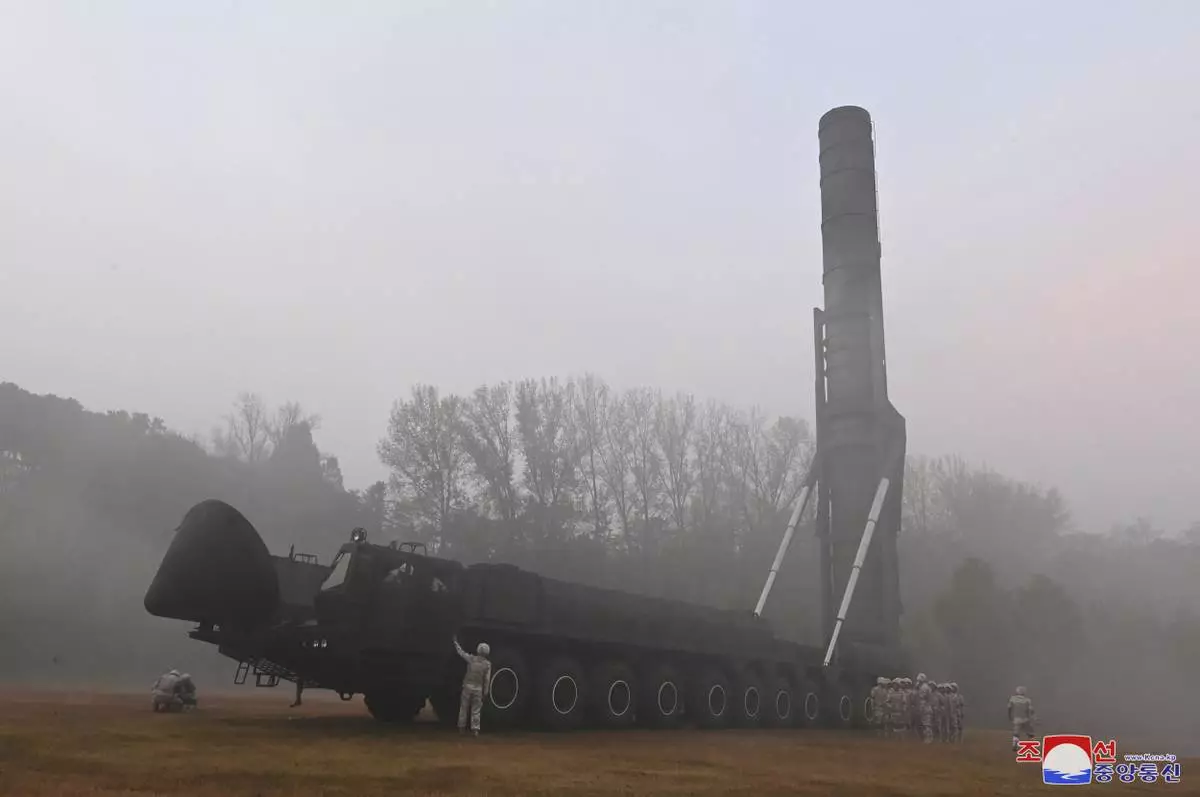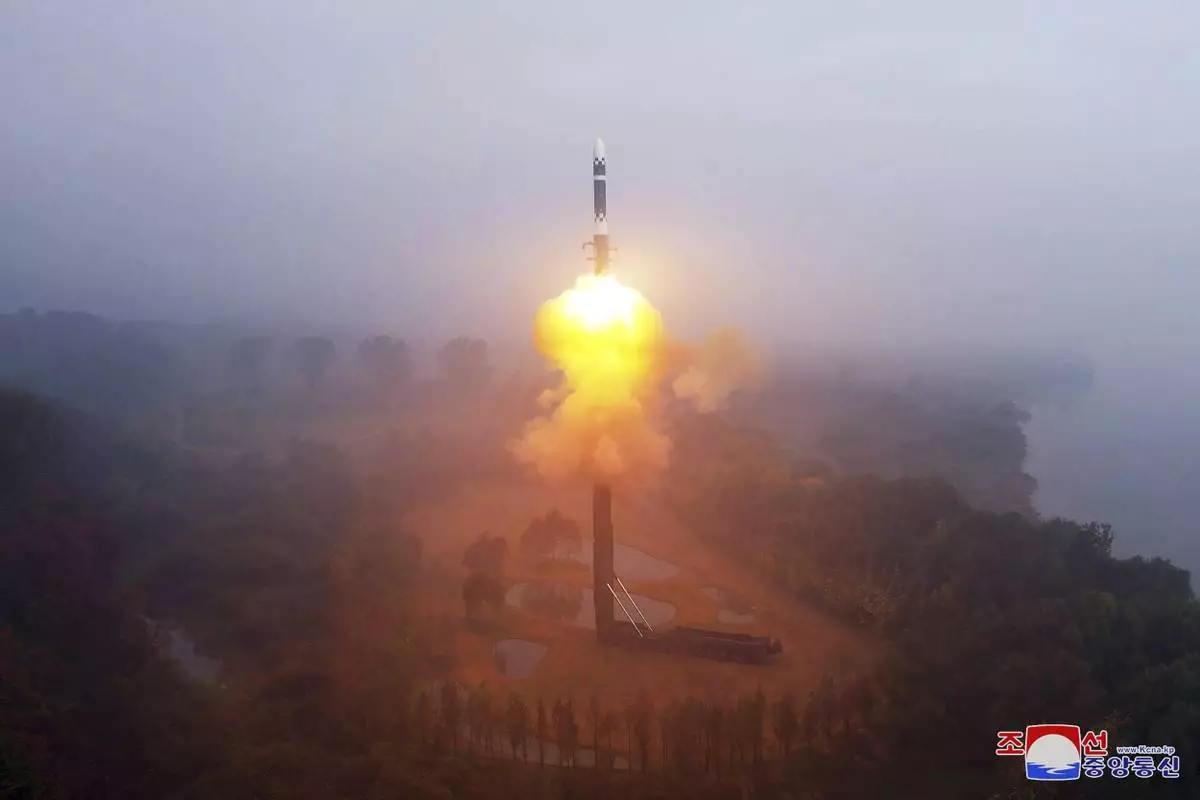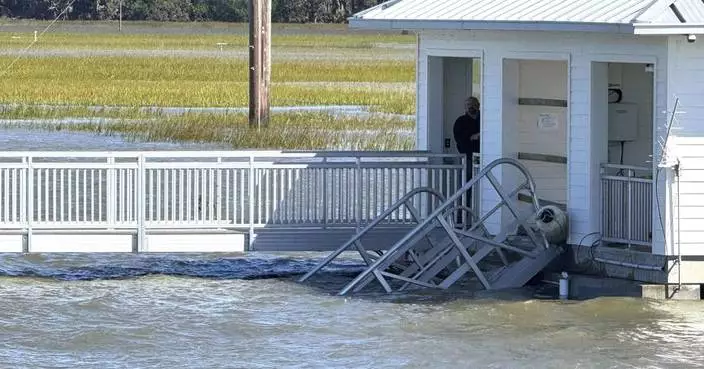WASHINGTON (AP) — America's foreign adversaries will again seek to influence the upcoming U.S. elections, top security officials warned members of the Senate Wednesday, harnessing the latest innovations in artificial intelligence to spread online disinformation, mislead voters and undermine trust in democracy.
But the U.S. has greatly improved its ability to safeguard election security and identify and combat foreign disinformation campaigns since 2016, when Russia sought to influence the election, U.S. Director of National Intelligence Avril Haines testified to the Senate Intelligence Committee.
The latest warning from security officials comes as advances in AI make it easier and cheaper than ever to create lifelike images, video and audio that can fool even the most discerning voter. Other tools of disinformation include state media, online influencers and networks of fake accounts that can quickly amplify false and misleading content.
Russia, China and Iran remain the main actors looking to interfere with the 2024 election, security officials said, but due to advances in technology other nations or even domestic groups could try and mount their own sophisticated disinformation campaigns.
Russia remains “the most active foreign threat to our elections,” Haines said, using its state media and online influencers to erode trust in democratic institutions and U.S. support for Ukraine.
In recent months, Russia has seized on America’s debate over immigration, spreading posts that exaggerate the impact of migration in an apparent effort to stoke outrage among American voters.
China did not directly try to influence the outcome of the 2020 presidential election, mostly because of concerns over blowback, Haines said.
China's ties to TikTok were one of the things cited by members of Congress who recently voted to force TikTok's Beijing-based owner to sell the platform.
“Needless to say, we will continue to monitor their activity,” Haines said of China.
Iran, meanwhile, has used social media platforms to issue threats and try to confuse voters, Haines said. She cited a 2020 episode in which U.S. officials accused Tehran of distributing false content and being behind a flurry of emails sent to Democratic voters in multiple battleground states that appeared to be aimed at intimidating them into voting for President Donald Trump.
Previous efforts by federal agencies to call out foreign disinformation on platforms like Facebook or X, formerly known as Twitter, have quickly become caught up in debates over government surveillance, First Amendment rights and whether government agencies should be tasked with figuring out what's true.
Republican Sen. Marco Rubio of Florida, the top Republican on the committee, questioned the officials about what they could do and how they would respond to “clearly fake” AI-generated videos about candidates that surface before the election.
“Who would be the person that would stand before the American people and say, ’We’re not interfering in the election. We just want you to know the video’s not real. Who would be in charge of that?” Rubio asked.
Haines responded that “I could be the person who goes out and makes that determination" but said there may be certain situations in which it would make more sense for state or local authorities to make that announcement.
Wednesday’s hearing on foreign threats to the election also covered the risk that an adversary could hack into state or local election systems, either to change the vote or to create the perception that the outcome can’t be trusted.
Jen Easterly, director of the Cybersecurity and Infrastructure Security Agency, said the federal government has worked closely with state and local election officials to ensure the 2024 election is the most secure ever.
“Election infrastructure has never been more secure,” Easterly said.

Avril Haines, right, director of National Intelligence, speaks as Lt. Gen. Jeffrey Kruse, left, director of the Defense Intelligence Agency, listens during the open portion of a hearing of the Senate Armed Services Committee on Capitol Hill, Thursday, May 2, 2024, in Washington. (AP Photo/Mark Schiefelbein)
SEOUL, South Korea (AP) — North Korea on Friday bragged of its recently tested new intercontinental ballistic missile, calling it “the world’s strongest,” a claim viewed by outside experts as propaganda though the test showed an advancement in the North's quest to build a more reliable weapons arsenal.
A missile launched by North Korea on Thursday flew higher and stayed in the air for a longer duration than any other weapon the country had so far fired. It signaled that the North has achieved progress in acquiring a nuclear-armed ICBM that can hit the U.S. mainland. But foreign experts assess that the country has still a few remaining technological issues to master before acquiring such a functioning ICBM.
On Friday, the North’s Korean Central News Agency identified the missile as “Hwasong-19” ICBM and called it “the world’s strongest strategic missile” and “the perfected weapon system.”
KCNA said leader Kim Jong Un observed the launch, describing it as “an appropriate military action” to express North Korea’s resolve to respond to its enemies’ moves that escalated tensions and threats to North Korea’s national security. It said Kim thanked weapons scientists for demonstrating North Korea’s “matchless strategic nuclear attack capability.”
South Korea’s military earlier said that North Korea could have tested a solid-fueled missile but Friday’s KCNA dispatch didn’t say what propellant the Hwasong-19 ICBM uses. Observers say the color of exhaust flames seen in North Korean media photos on the launch still suggest the new ICBM uses solid fuels.
Before Thursday’s test, North Korea’s most advanced ICBM was known as the “Hwasong-18” missile which uses solid fuels. Pre-loaded solid propellants make it easier to move missiles and require much less launch preparation times than liquid propellants that must be fueled before liftoffs. So it’s more difficult for opponents to detect launches by solid-fuel missiles.
In recent years, North Korea has reported steady advancement in its efforts to obtain nuclear-tipped missiles. Many foreign experts believe North Korea likely has missiles that can deliver nuclear strikes on all of South Korea, but it has yet to possess nuclear missiles that can travel to the mainland U.S.
There are questions on whether North Korea has acquired the technology to shield warheads from the high-temperature, high-stress environment of atmospheric reentry. Many foreign analysts say North Korea also must have improved altitude control and guidance systems for missiles. They say North Korea needs an ability to place multiple warheads on a single missile to defeat its rivals’ missile defenses.
All of North Korea’s known ICBM tests, including Thursday’s, have been performed on steep angles to avoid neighboring countries. South Korean military spokesperson Lee Sung Joon said Thursday that a high-angel trajectory launch cannot verify a missile’s re-entry vehicle technology, though North Korea has previously claimed to have acquired that technology.
Observers say that Thursday's launch, the North's first ICBM test in almost a year, was largely meant to grab American attention days before the U.S. presidential election and respond to international condemnation over North Korea's reported dispatch of troops to Russia to support its war against Ukraine.
North Korea's reported troop dispatch highlights the expanding military cooperation between North Korea and Russia. South Korea. the U.S. and others worry North Korea might seek high-tech, sensitive Russian technology to perfect its nuclear and missile programs in return for joining the Russian-Ukraine war.
__
Associated Press writer Kim Tong-hyung contributed to this report.

This photo provided by the North Korean government, shows what it says a test launch of new intercontinental ballistic missile "Hwasong-19" at an undisclosed place in North Korea Thursday, Oct. 31, 2024. Independent journalists were not given access to cover the event depicted in this image distributed by the North Korean government. The content of this image is as provided and cannot be independently verified. Korean language watermark on image as provided by source reads: "KCNA" which is the abbreviation for Korean Central News Agency. (Korean Central News Agency/Korea News Service via AP)

This photo provided by the North Korean government, shows what it says a test launch of new intercontinental ballistic missile "Hwasong-19" at an undisclosed place in North Korea Thursday, Oct. 31, 2024. Independent journalists were not given access to cover the event depicted in this image distributed by the North Korean government. The content of this image is as provided and cannot be independently verified. Korean language watermark on image as provided by source reads: "KCNA" which is the abbreviation for Korean Central News Agency. (Korean Central News Agency/Korea News Service via AP)

This photo provided by the North Korean government, shows what it says a test launch of new intercontinental ballistic missile "Hwasong-19" at an undisclosed place in North Korea Thursday, Oct. 31, 2024. Independent journalists were not given access to cover the event depicted in this image distributed by the North Korean government. The content of this image is as provided and cannot be independently verified. Korean language watermark on image as provided by source reads: "KCNA" which is the abbreviation for Korean Central News Agency. (Korean Central News Agency/Korea News Service via AP)













